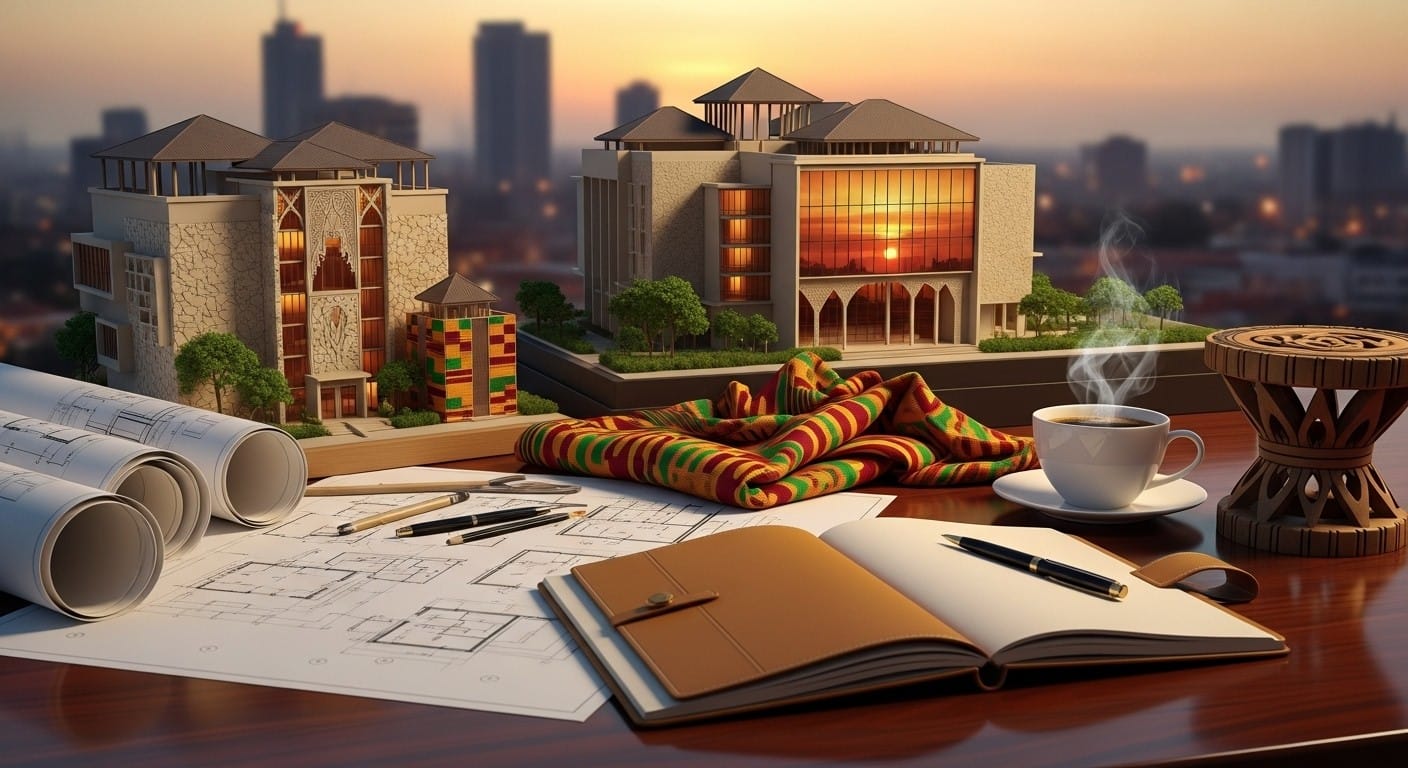Decoding Architectural Fees: A Guide from Initial Design to Project Completion
Embarking on a new building project is an exciting venture, but it often comes with a significant question: “How much will the architect cost?” The answer is rarely a single number. Understanding what influences architecture fees from design to completion is the first step for any client aiming for a successful, budget-conscious project. Architectural pricing is shaped by a blend of project specifics, client choices, and the architect’s scope of work, all unfolding across distinct project phases.
This guide breaks down the essential factors and structures that determine an architect’s compensation, empowering you to navigate your next project with clarity and confidence.
Project Costs vs. Construction Costs: The Foundational Budget
Before diving into fee structures, it’s crucial to distinguish between two core budget categories. Misunderstanding this difference can lead to surprise expenses down the road.
- construction costs (Hard Costs): These are the expenses directly related to the physical building process. Think of it as the cost of bricks and mortar, plus the labor to assemble them. This includes contractor fees, materials, the building’s exterior shell, interior finishes, and systems like plumbing, electrical, and HVAC.
- Project Costs (Soft Costs): These are all other expenses necessary to make the project happen but are not part of the physical construction. These are often overlooked in initial estimates but are just as vital.
Examples of Soft Costs Include:
- Architectural and engineering fees
- Permit, survey, and legal fees
- Furniture, Fixtures, and Equipment (FF&E)
- Land acquisition and site analysis costs
- Moving costs and owner-provided technology
Architectural fees are a percentage of the construction cost, but they fall under the overall project cost budget.
Key Factors That Shape Architectural Pricing
Several variables interact to determine the final fee. This dynamic is often described by the project management triangle, where Scope, Quality, Time, and Cost are interconnected. A change in one variable will inevitably affect the others.
1. Project Scope and Complexity
Perhaps the single greatest factor, project complexity refers to the level of detail and integration required. A simple warehouse is far less complex (and thus less expensive to design) than a high-tech medical office or a custom residence with unique features. Architectural projects are often categorized by complexity, which directly impacts the design effort and corresponding fee.
2. Site Conditions and Location
The nature of the building site plays a major role. An urban site with existing infrastructure presents different challenges than a rural, undeveloped plot. Key site-related factors include:
- Topography and Ground Conditions: Sloped sites or poor soil may require more complex engineering and foundation solutions.
- Location and Regulations: Urban locations often have higher land values, stricter zoning laws, and more complex permit processes.
- Climate: Designing for specific climates (e.g., areas prone to high winds or flooding) requires specialized design considerations that influence cost.
3. The Architect’s Role and Experience
While it may seem counterintuitive, hiring a more experienced architect, who may have a higher fee, can lead to significant cost savings. A seasoned professional can optimize designs, avoid costly errors, and manage the project efficiently. The specific services you require also shape the fee; a basic design package will cost less than a full suite of services that includes interior design, landscape architecture, and construction oversight.
4. Quality of Materials and Sustainability Goals
Your choices directly impact the budget and the architect’s scope of work. Opting for high-end finishes, custom-designed furnishings, or pursuing green certifications like LEED (Leadership in Energy and Environmental Design) will increase the construction cost, which in turn affects a percentage-based fee. An architect helps you weigh the upfront costs against long-term benefits and lifecycle savings.
Common Architectural Fee Structures Explained
Architects typically use one of three primary methods—or a hybrid—to structure their fees. The final architectural pricing is often a culmination of decisions made across every project stage.
- Percentage of Construction Cost: This is the most common method for large projects. The fee is a set percentage (often 5-20%) of the final construction cost. This model aligns the architect’s compensation with the project’s scale and incentivizes them to design within the budget.
- Fixed Fee: A stipulated sum for the entire project. This provides the client with cost certainty, which is ideal for budgeting. The fixed amount is usually calculated based on an initial estimate of project scope and construction cost, and it will change if the scope changes.
- Hourly Rate: This “time and materials” approach is common for smaller projects, pre-design services (like feasibility studies), or when the scope is not yet clearly defined. It offers flexibility but less budget predictability.
How Fees Align with Architectural Design Phases
An architect’s work isn’t a single task but a series of stages. Fees are typically billed incrementally as the project progresses through these phases. This breakdown is crucial to understanding the full lifecycle of architecture fees from initial concept to final build.
| Design Phase | Typical Percentage of Total Fee | Key Activities |
|---|---|---|
| 1. Programming / Pre-Design | Typically Hourly | Defining project goals, scope, and budget. Researching site and zoning requirements. |
| 2. Schematic Design | 15% – 20% | Developing initial concepts, floor plans, site plans, and basic exterior looks. |
| 3. Design Development | 15% – 20% | Refining the design, selecting materials, and detailing building systems (structural, mechanical). |
| 4. Construction Documents | 35% – 40% | Creating the detailed technical drawings and specifications that contractors will use to build the project. |
| 5. Bidding & Negotiation | 5% – 10% | Assisting the client in selecting a contractor and negotiating the construction contract. |
| 6. Construction Administration | 20% – 25% | Overseeing construction to ensure it adheres to the plans, reviewing pay requests, and resolving issues on site. |
The Cost-Influence Curve: Why Early Decisions Matter Most
A fundamental concept in construction is the cost-influence curve. It shows that the ability to influence the final cost of a project is highest during the early phases (Programming and Schematic Design) and decreases dramatically as work progresses. Making a change on paper is inexpensive; making the same change once construction has started can be extraordinarily costly. This underscores the value of investing time and resources in the initial planning and design stages to prevent expensive rework later.
Conclusion: A Partnership for Success
Ultimately, an architect’s fee is an investment in the success and long-term value of your property. It covers far more than just drawings; it encompasses problem-solving, navigating complex regulations, managing stakeholders, and advocating for your vision. By grasping the key factors, fee structures, and the critical design phases, clients can confidently navigate the complexities of architectural project costs and forge a strong, transparent partnership with their architect from start to finish.











